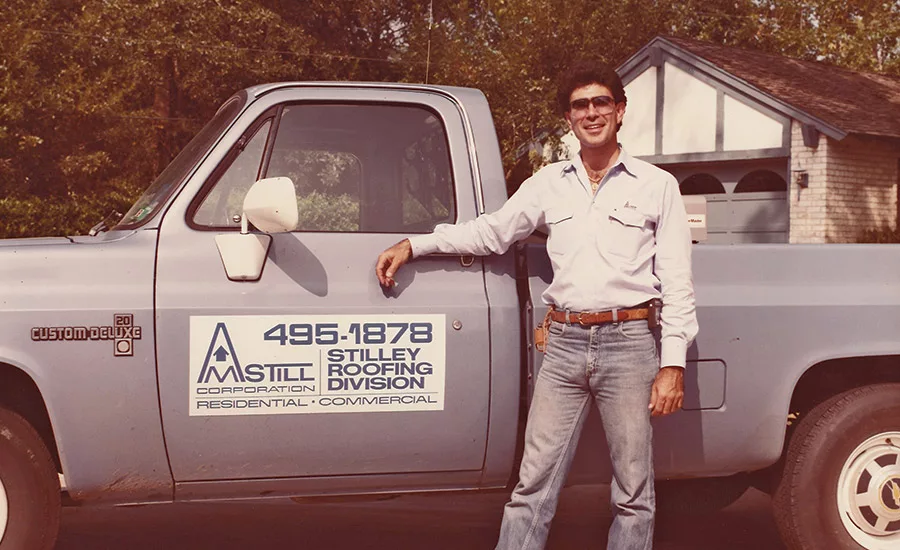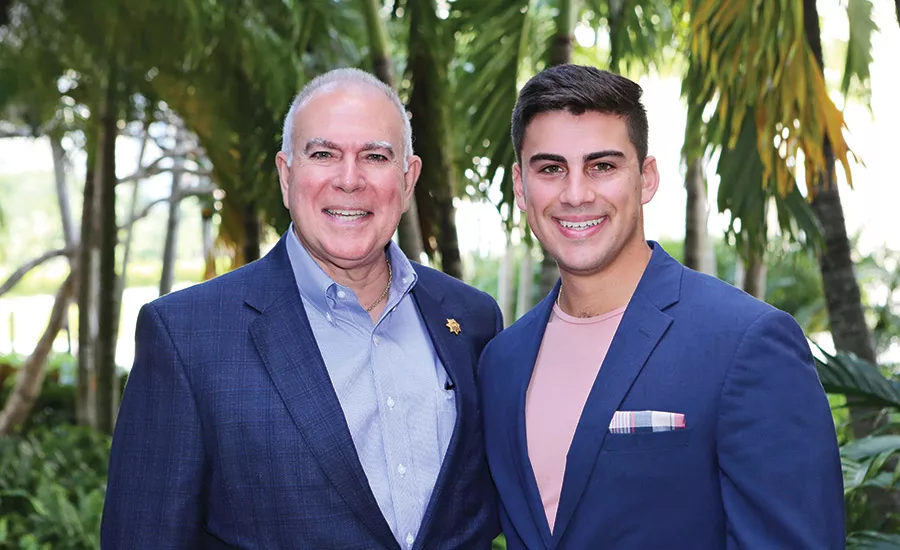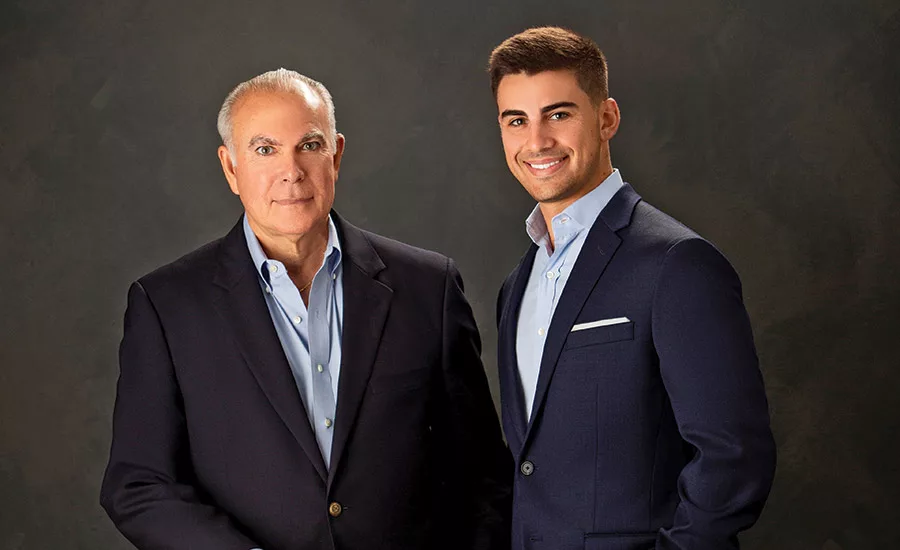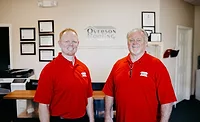Fathers and Sons: Amstill Roofing

Photo courtesy of Amstill Roofing.

Photo courtesy of Amstill Roofing.

Frank Stilley’s roofing business had hit a low point. After more than 30 years of building a trustworthy reputation and re-inventing his business model multiple times to capitalize on roofing trends in the greater Houston area, jobs were drying up — literally.
Consecutive years of severe, record-breaking droughts across south Texas starting in 2011 created a slowdown in business unrivaled in his career.
“The service work dried up and there weren’t any marketing funds available to drum up new business or an elaborate way of getting your name out there,” said Stilley, who founded Amstill Roofing in his hometown of Houston in 1974.
Ever the optimist, Stilley stayed committed to his belief that continuing to do high-quality work and exceed customer expectations would see him through — just as it did during the recessions, political turmoil and devastating storms his company weathered in the past. Still, the business needed a spark. Someone that could infuse some enthusiasm, eradicate inefficiencies in his operations and sell a new path for growth in an industry that’s historically slow to embrace change.
His only child, Sam — who had been on jobsites since he was a toddler and spent his high school summers on the rooftop learning the business — was in position to one day take over the company. But he was still honing his entrepreneurial and marketing skills while earning a degree at the University of Houston. Sure, they could continue the family legacy, but for the first time, they both worried about what kind of company Amstill would be.
No Turning Back
The elder Stilley’s roofing story started with his father, but not in the traditional sense. Himself an only child, Frank was very close with his parents and idolized his father’s work ethic and integrity with clients as a successful salesman for a steel company.
His father’s rapid demise from cancer forced Frank, at age 21, to leave college in Austin, Texas, and move back home to help care for his mom. Hungry for work and eager to prove himself, he started knocking on doors around the neighborhood, offering his services for household repairs. He also began to notice that many of the original cedar roofs — prevalent throughout the Houston area at the time — were missing a shake or two. Without any roofing experience, he strapped a ladder to his mom’s ’67 Pontiac coupe and mustered enough work to help pay the family bills.
“I never went back to school because I had to work. But I never gave up, and I never had a pity party,” Stilly, now 68, explained. “I just stayed positive and had an assertive attitude to give it my very best, to always keep trying.”
That attitude, forged by his mother when growing up, began to pay dividends quickly. Amstill’s repair work blossomed and soon expanded into full cedar shake replacements as Houston’s housing stock aged. Stilley’s “everyman” approach appealed to homeowners, as did his discipline on the jobsite — becoming the only local roofer to offer one-day service at the time. The company further stood out in the marketplace with some high-profile jobs in the early 1980s, like the Sugar Creek Country Club and Champions Country Club. But it wasn’t until later that decade that Amstill really took off by being at the forefront of the algae-resistant shingle movement that swept through greater Houston and other communities along the Gulf Coast.
As a young adult contemplating his own future, Sam said he thought of his father’s roofing origin story, admiring his resiliency and ability to adapt to a changing marketplace.
“I can remember the countless afternoons he would pick me up from school and I would ride with him to appointments. The countless nights I would sleep on the office floor on my little mat while he worked on paperwork, estimates, job scheduling,” said Sam, now 27. “I never thought growing up I’d be the next generation of the company, but for my childhood growing up, it was a part of me.”
That tie was too strong to cut cleanly after graduation, as was the drive to help his father get through the business drought. So Sam did what any motivated entrepreneurial spirit with an available cache of able-bodied friends would do — put them to work. He offered any fraternity brother $15 an hour to help him roof, and another $25 for every lead.
“Here we were beating on doors with no structured pitch, and I had no clue what hail damage even looked like,” he recalled. “It was a humbling time, but what really got me involved with the company was when homeowners started calling us, asking us to do their roof because they could see the noticeable difference between our Amstill roofs, compared to the others on the street. That was the moment that changed my life forever. When I realized that I could have an honest career just taking care of doing things the right way, having something to be proud of.”
Parental Pride
Now officially Amstill’s CEO, the younger Stilley’s impact on the company is unmistakable. A graduate of the Wolff Center for Entrepreneurship — regarded as one of the top undergraduate programs of its kind in the country — Sam has brought a level of marketing creativity and technological savvy that has positioned the company well for future growth. Company branding, fostering positive online reviews and increased customer engagement have all become priorities while Sam continues to sell roofs.
He’s also implemented operational efficiencies by simplifying. An office manager oversees all administrative duties for about two dozen full-time employees, and two sales managers oversee teams that can respond quickly to storms as well handle leads from inbound calls. Roughly 95% of Amstill’s current workload is residential, but expanding into commercial projects is in the plans. Discipline and training are cornerstones for any continued success. Roofing crews spend the final 30 minutes of each day recapping projects so that any problems get aired and addressed quickly. The sales teams train every morning, five days a week.
“Training is the utmost important thing,” Sam explained. “Our clients rely on us from the moment they call our office, which is why we pride ourselves on the basis that knowledge is power, and we will never allow our sales reps to be underprepared.”
Building a company culture around fundamentals his father instilled in him as both a role model in life and in business is also a mission. The company shares weekly family-style, self-serve lunches, provides health benefits, and is in the process of building retirement and profit-sharing plans for all staff.
It’s all much more than Frank could’ve envisioned for his company, and for his son, who he raised as a single parent since age 4.
“It’s just been an incredible relationship with my son,” Frank said. “I’ve always tried to build him up, like my mom did for me, and to this very day, he’s one of the greatest accomplishments of my life. I never thought I’d dream to see my son take over the roofing company and continue it and maybe pass it on. It’s been an incredible journey.”
Editor’s Note
It doesn’t take long to recognize the prevalence and importance of family succession stories in roofing. Regardless of being in the commercial or residential sector, or whether involved in the installation, distribution or manufacturing of roofing products and services, roofing professionals from around the country have very rich, educational and inspirational stories to tell about working with family in order to reach their goals. We will continue to root out and share those stories in the hopes it will help roofers connect and excel in their respective business ventures.
In honor of Father’s Day this month, we’ve chosen this issue to launch a new series called Fathers & Sons (or Daughters) that focuses on some of the most dynamic relationships in roofing. If you have a multi-generational family business with a good story to tell, maybe you should be next. Email aisnera@bnpmedia.com.
Looking for a reprint of this article?
From high-res PDFs to custom plaques, order your copy today!







